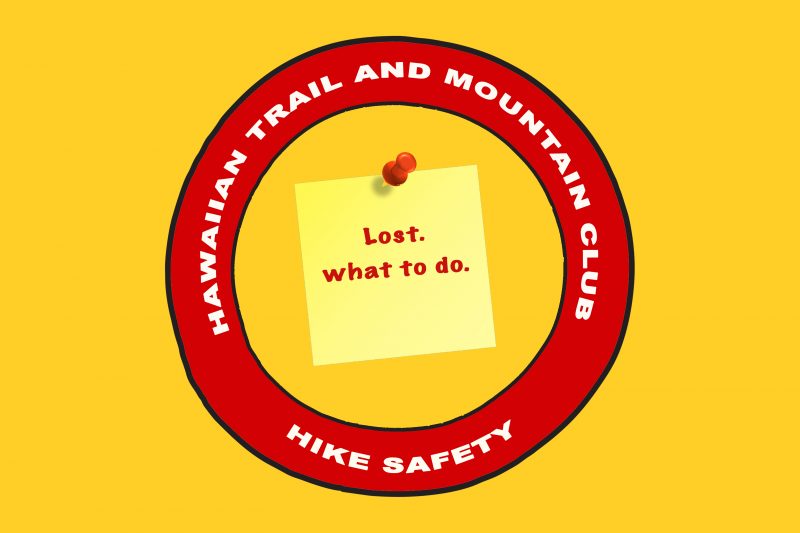Oh No… I think I am lost!

When you head out on a hike, you don’t intentionally plan on getting lost…. but did you prepare for the possibility? Even the best of hikers can get lost, getting led off trail by pig trails, hunter’s trails, criss-crossing trails, or simply when the intended trail is overgrown or not well marked.
There are steps you can take prior to your hike to
- Keep you from getting lost:
- Research and plan your hike
- Bring navigation tools – maps, compass, and/or electronic devices
- Being findable if you are lost:
- Make sure someone knows your plan and knows to call 911 if you don’t contact them by a designated time. Stick to your plan. It will be harder to find you if you are not where you said you would be!
- Bring a charged cell phone and a back-up battery charger
- Bring a whistle and signal mirror
- Being safe while waiting for help:
- Bring extra water, food, and warmth (jacket, space blanket, etc.)
- Bring a flashlight with extra batteries
HTMC Hike Safety Webpage has more details on the planning aspects for your hike.
While hiking …. Steps to keep from getting lost.
- Stay on the trail and pay attention. Look around so that later, you can recognize parts of the trail. Look behind you to see what the trail looks like. Pay attention at intersections. Are there any unusual trees, rocks, or roots? Maybe take pictures.
- When hiking with others, make sure you are paying attention to the trail while you are chatting or following friends. Don’t blindly follow others.
- Regularly make sure you are still on the trail. Check the ground and also for trail markers (Pink ribbons on HTMC hikes). If you are not sure that you are still on the trail, STOP. Look around and backtrack to where you are convinced you are back on the main trail.
- Periodically check your location on your tracking app or on your hardcopy map.
- Give yourself enough time to get back to your cars before it gets dark. Set a turnaround time and stick to it.
You are lost. Now what?
Many experts recommend the following acronym: STOP
S – Stop
T – Think
O – Observe
P – Plan
Stop
A natural reaction is to panic, but it is impossible to make any good decisions while panicking. Stop and sit down. Take some deep breaths. Remember, if you are prepared with sufficient gear and someone is calling 911 when you don’t show up, you can calmly wait for a rescue.
Think
Calmly start to think. Running around in a panic will most likely lead you further away from the trail. Calmly analyze your situation.
Observe
Are you in a dangerous place? Should you move to a safer location? Double check, are you really lost? Check your navigation tools (maps and electronic apps). Do you have cell reception? What supplies do you have to help you be visible to rescuers (bright colored items, signal mirror, etc.)? Do you have extra water, food, warmth, or access to shade?
Plan
With the above information, you can come up with a plan. If you cannot retrace your steps with the use of your map or electronic app, the best advice is to stay put. Many lost hikers unintentionally move further and further away from help, which delays their rescue. See if you can call 911 for help. If you cannot make a call, then see if you can get a text to your emergency contact person with the details. If you are unable to call or text, then wait patiently for your emergency contact to call for help when you don’t show up at the expected time.
Plan for the possibility of staying overnight. Think about building a shelter or at minimum, protection against the elements. The key is to stay safe, dry, and warm. It is recommended not to start a fire due to wildfire concerns.
Calling 911
Calmly tell 911 your name, that you are lost, if you are alone or with others, and your approximate location (trail name, etc.) and anything else about your location (next to a stream, cliff, on a ridge, etc.). Any bright colors they should be looking for? Any special needs (medication, water, warmth, etc.)? If you are texting, you will need to add your GPS coordinates (Latitude and Longitude).
Blow your whistle and use a signal mirror.
The rescue helicopter may be dispatched or there is a possibility that a ground crew will walk in to find you. Blow your whistle instead of shouting for help. You’ll be able to make noise for longer without tiring yourself out and it will be louder and easier to detect. Periodically blow your whistle in a burst of three. You can also use a signal mirror to reflect sunlight and signal your location to rescuers.
The HTMC Hike Safety Committee hopes this article will prevent you from becoming lost, being findable if you are lost, and prepared to safely wait for the rescue.
